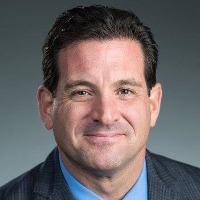Have you ever heard of Opportunity Zones? Established as part of the Tax Cuts and Jobs Act of 2017, the Opportunity Zone program was created to spur investment in economically distressed communities by offering investors significant tax incentives.
In essence, they’re a government-backed way to encourage you to reinvest capital gains into designated areas in exchange for potentially huge tax breaks. Now, they might sound like a complex tax concept far removed from your daily CPA practice, but they could play a pivotal role in your retirement strategy.
The first Qualified Opportunity Zones (QOZs) were designated in 2018 across all 50 states and U.S. territories. The idea gained traction when investors realized the generous benefits: you can defer paying tax on recent capital gains and even eliminate taxes on future profits if you stick with the investment long-term. For a CPA practice owner approaching retirement, this means an opportunity to shelter the gain from selling your practice or other investments and make that money work for you in a tax-advantaged way.
As a CPA, you may already be planning for retirement with tools like 401(k)s, and you’re familiar with the basics of Social Security and Medicare. Opportunity Zones add another layer to your planning by addressing a question many retiring practice owners face: What should I do with the proceeds from selling my business?
Opportunity Zone Investment Mechanics
The tax benefit of Opportunity Zones only applies to capital gains. This includes gains from selling stocks or other investments, and it can include the gain portion from selling your CPA practice (whether you sold company stock or the practice’s assets) as long as it’s recognized as capital gain. According to IRS regulations, “eligible gains” cover both regular capital gains and Section 1231 gains (from business property sales), so long as those gains would be recognized for federal tax purposes by the end of 2026.
In practical terms, if you sell an asset – say, shares of stock, real estate, or your practice’s goodwill – and make a profit, that profit can likely be rolled into an Opportunity Zone investment. Ordinary income (like recaptured depreciation or inventory sales) doesn’t count.
The 180-day rule – timing is critical: The IRS requires that you reinvest your gain into a Qualified Opportunity Fund (QOF) within 180 days of the sale or exchange that generated the gain. In other words, you have about six months from the date you sold your asset (or from when you would recognize the gain on it) to put that money into an Opportunity Zone fund. This is a strict deadline.
What exactly do you invest in? You don’t invest directly into an “Opportunity Zone” location; you invest through a Qualified Opportunity Fund. A QOF is an investment vehicle (partnership or corporation) specifically set up to invest in property or businesses within the designated Opportunity Zones. There are many QOFs out there with different focuses: some invest in real estate development (like building apartments or offices in an OZ), and others invest in operating businesses in OZ areas.
As an investor, you’d typically subscribe to a fund by contributing your capital gain cash in exchange for an equity interest (shares or partnership units) in the fund. The fund then deploys that money into qualifying projects. It’s important to perform due diligence here – ensure the fund is reputable and compliant with IRS rules (funds must hold at least 90% of assets in OZ property, among other requirements).
Step-by-step: Reinvesting your CPA practice sale into an Opportunity Zone
If you decide to take advantage of this, here’s how the process might look:
- Calculate your eligible gain: Let’s say you sell your practice for $1.2 million. After allocating for any basis and ordinary income components, assume $1,000,000 is long-term capital gain from goodwill and client lists. This $1,000,000 is the amount eligible for Opportunity Zone reinvestment.
- Identify a Qualified Opportunity Fund: You’d then look for a QOF that meets your needs (risk tolerance, investment type, timeline). For example, you might choose a fund investing in commercial real estate developments within Opportunity Zones.
- Reinvest within 180 days: Move your $1,000,000 gain into the QOF within the allowed 180-day period. This is typically done by subscribing to the fund (signing an agreement and wiring the funds). The timing is crucial – if your sale occurred mid-year 2025, you’d likely need to invest by the end of that year to qualify.
- Elect the deferral on your tax return: When you file your 2025 federal tax return, you’ll inform the IRS that you’ve elected to defer the capital gain. This is done using Form 8949 and Form 8997, where you report the invested gain and make the deferral election.
- Hold and follow the rules: Now, you’ll need to hold that QOF investment to maximize the benefits. There’s no specific minimum holding period to get the initial deferral (just invest by 180 days and before the end of 2026), but the longer you hold, the better the tax breaks (more on that next). Keep in mind the fund itself has compliance rules – you, as the investor, mostly need to stay invested and report annually to the IRS that you still have your QOF investment (Form 8997 is used for annual reporting of QOF investments).
IRS Rules to Remember
The deferral on your original gain lasts until the earlier of December 31, 2026, or the date you sell your QOF investment, whichever comes first. That means if you invest in 2025 and hold the fund into 2027, you’ll hit that December 2026 cutoff and have to recognize (and pay tax on) the deferred $1,000,000 gain in your 2026 tax return. However, any additional gains generated inside the Opportunity Zone investment can become tax-free if you meet the 10-year rule, which brings us to the next section.
Risk Factors and Mitigation
It’s important to remember that an Opportunity Zone investment is still an investment subject to market and project risks. Many QOFs are concentrated in real estate developments or startups in underdeveloped areas. These projects can be riskier and less liquid than, say, a diversified index fund. As a CPA, you should approach a QOF investment with the same scrutiny you’d give any major investment: review the fund’s business plan, management team, and financial projections. Consider these risk factors:
- Illiquidity: You’ll likely have your money locked in for a decade. Make sure you won’t need this cash for other purposes or emergencies (your retirement plan should have other liquid assets or income streams for flexibility).
- Project risk: If the underlying project fails (e.g., a real estate development doesn’t lease up or a business doesn’t take off), your investment could lose value. The tax break alone shouldn’t drive the decision – the investment needs to stand on its own merits.
- Concentration: Don’t put all your eggs in one basket. Opportunity Zone or not, maintain a balanced portfolio. It might make sense to invest only a portion of your sale proceeds into a QOF and allocate the rest to more traditional, liquid investments.
- Regulatory/Compliance risk: The QOF must adhere to complex IRS rules. While the burden is on fund managers to comply, any failure on their part could jeopardize the tax benefits for investors. This makes it crucial to invest with experienced, reputable fund sponsors who have a track record of compliance.
By acknowledging these risks and planning for them, you can mitigate potential downsides. Many CPAs find that the potential rewards – in terms of tax savings and aligning with long-term goals – outweigh the risks, especially when the investment is chosen carefully.
Predictions & Policy Considerations
There has been a lot of chatter in Washington about extending and improving the Opportunity Zone program. In fact, bipartisan legislation was introduced in Congress (the Opportunity Zones Transparency, Extension, and Improvement Act) that would extend the deferral period for new investments by two years to the end of 2028.
This bill also aimed to add reporting requirements and refine which areas qualify as zones, indicating lawmakers see value in continuing the program with some tweaks. However, due to political delays, that legislation didn’t pass in the last session and was on hold until 2025, pending the outcomes of the 2024 elections.
That said, nothing is guaranteed. Politics can be unpredictable, and despite bipartisan support, an extension bill could stall or be altered significantly. There’s also a chance that even if extended, the terms might change (for example, new zones could be designated, or some high-income census tracts currently labeled as OZs could be removed for fairness).
Call to Action
As a CPA, you know that tax laws are always subject to change. The prudent approach is to make decisions based on current law, not hoped-for extensions. Under current law, we have a clear timeline: invest by 2025/2026 to get the benefits. If you wait around for Congress to extend deadlines, you might find that either the extension comes too late for you or it doesn’t happen at all. Even in the best-case scenario that the program is extended, investing sooner means your 10-year clock starts now – so you reach the tax-free gains milestone sooner. And if the program isn’t extended, you haven’t lost your chance. Remember, the core benefit of tax-free growth after 10 years remains intact even if parts of the law expire; what expires is mainly the ability to defer new gains after 2026.
If you have any questions as to how Opportunity Zones may fit into your investment or retirement strategy, don’t hesitate to reach out.
Sources:










